The time signature 7/8 is a well known meter in classical music, but is sometimes used in popular music too. It contains measures (or bars) that have 7 eighth-note beats (quavers). These are counted in groupings of 2+2+3 or 3+2+2. Due to its irregular counting pattern, 7/8 gives music an out-of-step feel.
We’re going to dive straight into 7/8 time, but you can find more info on what a time signature is in our complete guide to meters.
What is time signature 7/8?
The time signature or meter 7/8 is shown in the music as a 7 above an 8.

This comes before the music starts but after the clef and key signature. The ‘7’ stands for 7 beats per measure and the ‘8’ tells us that each beat is an eighth note. This means that the notes in each measure will add up to seven eighth notes.
See if you can spot the seven eighth-note beats in this line of music.

Now here it is with the beats labelled.

How to count in 7/8
The time Signature 7/8, like all meters, has a distinctive feel to it. We can count 7/8 in a few different ways. In each measure the eighth notes are grouped into three strong beats. Each of these grouping represents a strong beat. This can either be as 2+2+3 or 3+2+2.
The below image shows 7/8 grouped as 2+2+3. We could count this as 1…&…2…&…3….&…a

The second was to count 7/8 is with grouping of 3+2+2. Now the grouping of three notes comes at the start of each measure. This is counted as 1…&…a…2…&…3…&…
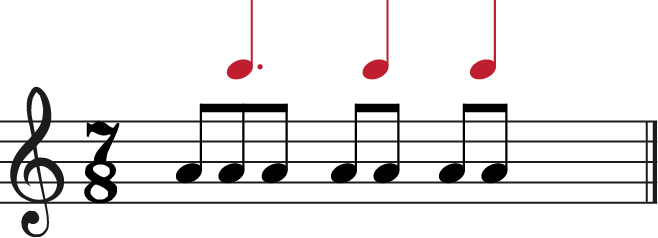
Here is a five measure (bar) piece that contains more complex rhythms with a variety of note lengths. Can you spot where each strong beat falls?
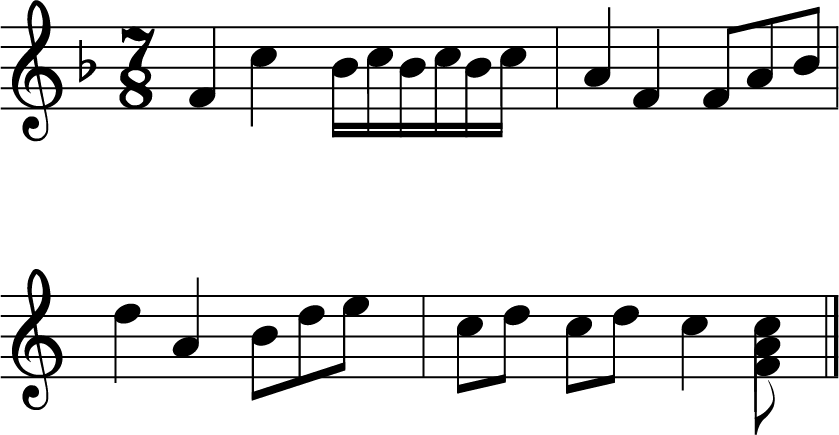
Now here it is with the beats added. We would count as 1..&…2…&…3…&…a
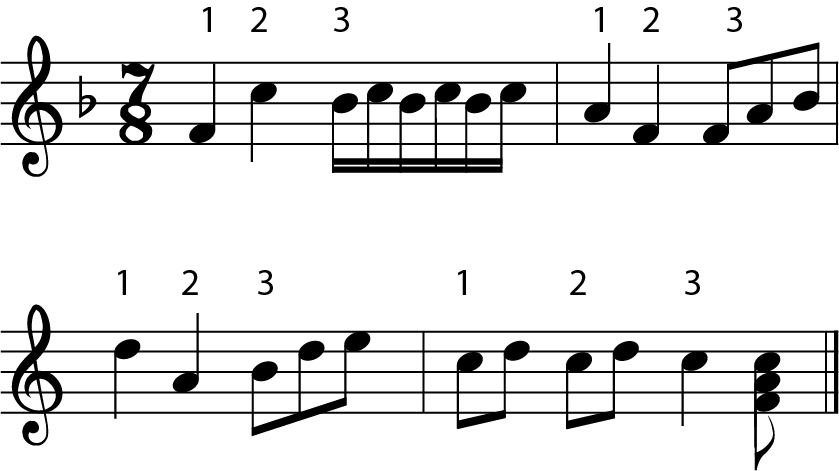
7/8 is a Complex Time Signature
There are three broad types of time signature: simple, compound and complex (irregular). Simple time signatures have beats that divide into two. Compound time signatures have beats that divide into three and complex time signatures have a mixture of beats.
In 7/8 we have an odd number of beats. The seven beats can be grouped in different ways, as 2+2+3 eighth notes or 3+2+2 eighth notes. This makes 7/8 a complex time signature as it has 2 simple beats and 1 compound beat. To learn more about the differences check out our ultimate guide to time signatures.
The image below shows how the eighth notes are grouped in 7/8 time.
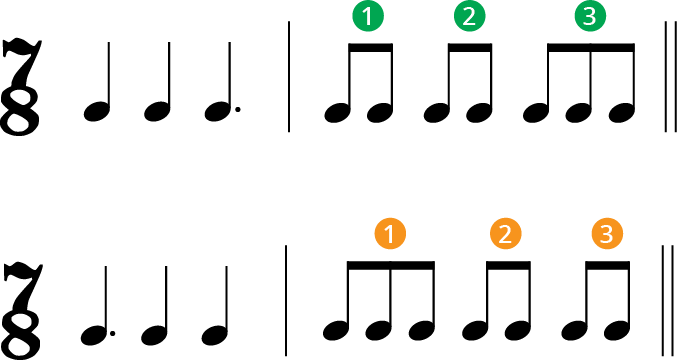
It is important to know that the compound beat (3 eighth notes) can never fall in the middle of the two simple beats.
Songs with a 7/8 Time Signature
King Crimson – Frame by Frame
Seal – Dreaming in Metaphors
Flower Punk – The Mothers of Invention
Ear Training and Meters
To develop as a musician you’ll want to be able to recognise time signatures by ear. This is where ear training comes in, as the more you practice, the better your’ll get.
My recommendation for this is Tonegym as they have a comprehensive and fun program for training your ears. It’s what has gotten the best results with for my own students.
They have a great game called ‘Rhythmania’, were you have to read rhythms in different meters and tap them back using the spacebar. I like how Tonegym structure the game so it always gives you the right level of challenge.
For an in-depth look at ear training, here’s my full review of Tonegym.
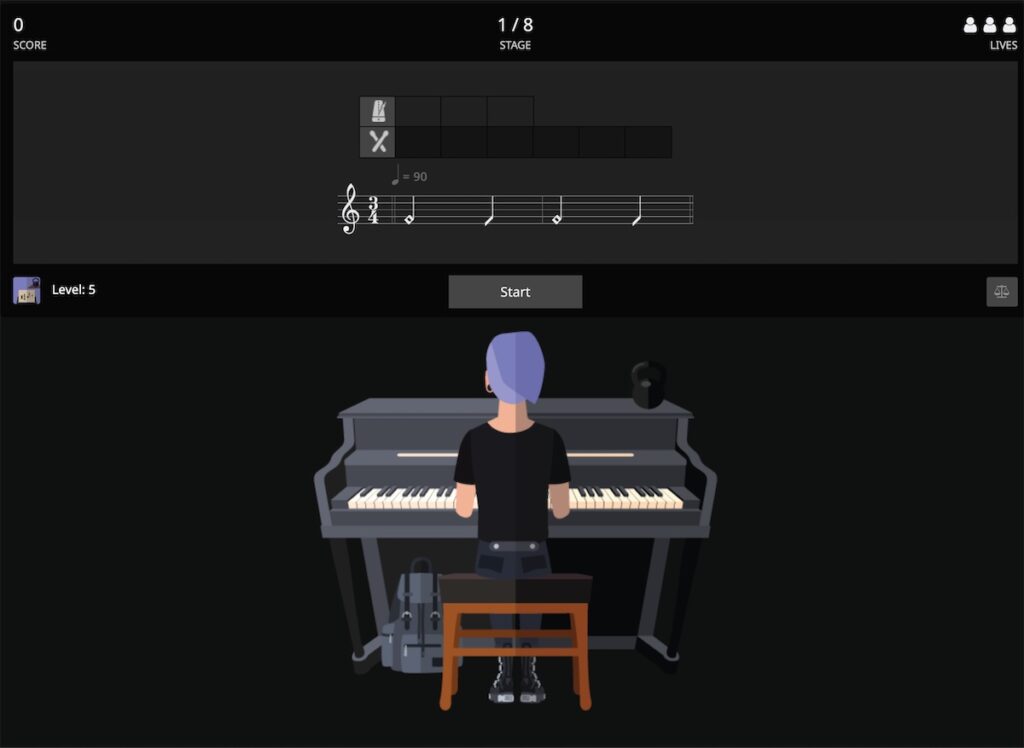
What’s the difference between 7/8 and 7/4?
Time signature 7/8 has seven eighth-note beats per measure. 7/4 also has seven beats per measure, but they are quarter-note beats. Both are complex meters as they have a mixture of simple and compound beats.
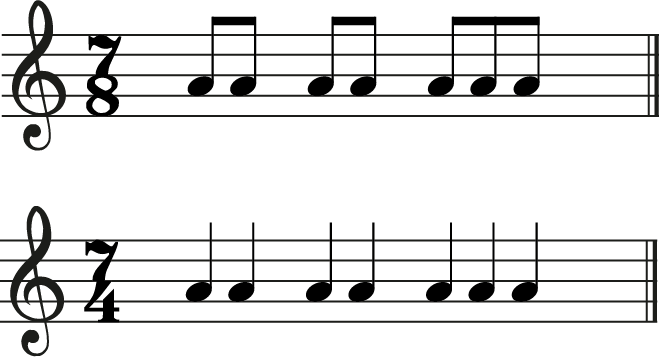
So when do we use 7/4 and when do we use 7/8. As a rough rule, a piece with a faster tempo is more likely to be in 7/8, whereas a slower piece may be in 7/4. This is not a strict rule and it is very much up to composers and transcribers how to decide this.
What next…?
If you want to learn more about time signatures, check out our complete guide to meters.
